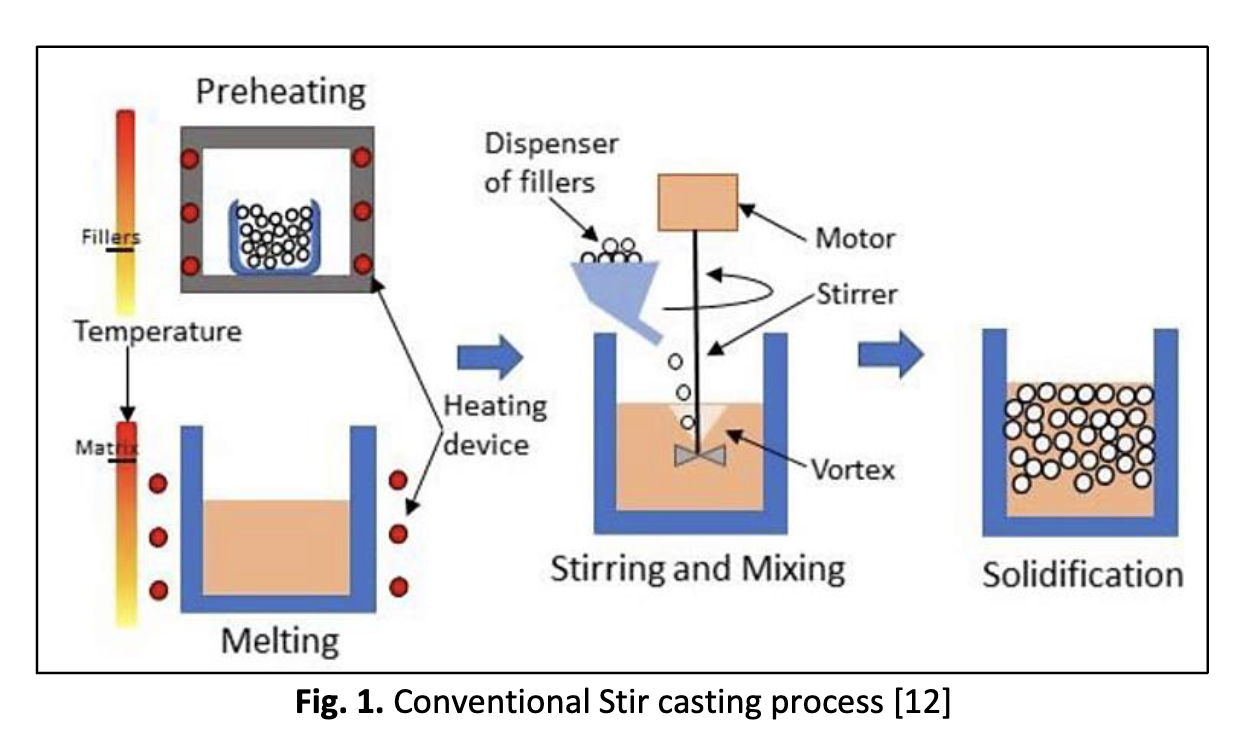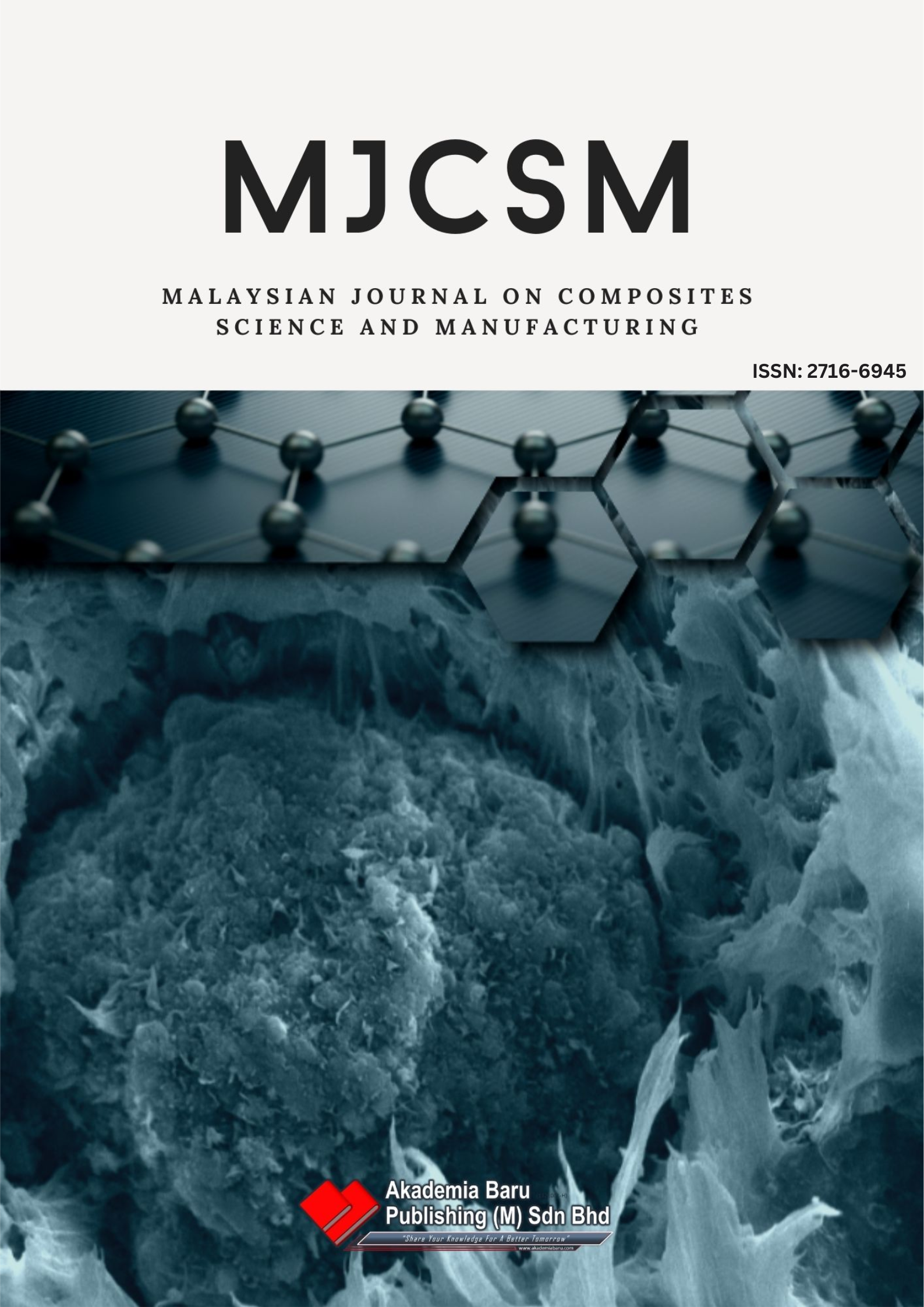Influence of Graphene on the Microstructure and Mechanical Properties of Aluminium Matrix Composite
DOI:
https://doi.org/10.37934/mjcsm.12.1.7383Keywords:
Semi-solid processing, aluminum matric composite, graphene nanoplatelets, stir casting, short heat treatment, Taguchi MethodAbstract
The constraints of conventional aluminum alloys have prompted the investigation of strengthening substances such as carbon nanotubes and graphene fillers. The improved composite exhibits suitability for applications in the automotive and aviation industries. Graphene's popularity stems from its high strength, electrical and thermal conductivity, and chemical inertness, making it ideal for mechanical, thermal, and microstructural applications. This research varied concentrations of graphene nanoplatelets (0.3%, 0.6%, and 0.9%) to enhance the mechanical properties of aluminum metal matrix composites. A stir casting process was employed to create a graphene-reinforced aluminum matrix composite using A356 aluminum alloy. A designed experiment (DOE) investigated the impacts of graphene concentration and suitable heat treatment time on the aluminum composite. Subsequently, the specimens underwent heat treatment and X-ray diffraction (XRD). Mechanical properties were examined using a universal testing machine. The best aluminum matrix composites were produced with 0.9wt% graphene and 180 minutes of heat treatment. These parameters resulted in a microstructure with refined grains evolving from dendritic to rosette. The grains became closely packed, and reduced porosity was observed. As a result, the mechanical properties were enhanced, with a maximum ultimate tensile strength (UTS) of 250 MPa and a fracture elongation of 6%. The findings indicate that graphene nanoplatelet (GNP) concentration significantly influences the mechanical characteristics of the composite. Tensile and yield strength increase with GNP concentration, but higher concentrations reduce the composite's ductility. These insights contribute to optimizing GNP-reinforced composites and developing innovative materials with superior mechanical properties.
Downloads












